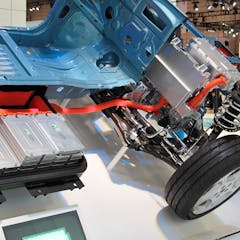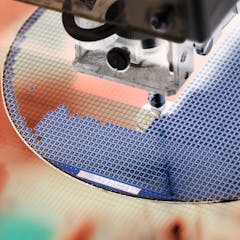
Articles on Electronics
Displaying 1 - 20 of 85 articles

Quantum computers that work at slightly higher temperatures could be cheaper and more accessible.

Compared to its 1980 predecessor, the new FX series presents a more authentic portrayal of early modern Japan.

Electric vehicles are catching on across the US, but they’re also catching on fire in colder regions like the Northeast and Midwest.

Mining precious metals is expensive and environmentally destructive. As an alternative, researchers are increasingly eyeing recycling old smartphones, computers and other electronics.

Lithium-ion battery fires are becoming increasingly common as electric vehicles spread, and are hard to extinguish. A new approach uses an electrolyte based on a commercial fire extinguisher.

Lithium-ion batteries power many electric cars, bikes and scooters. When they are damaged or overheated, they can ignite or explode. Four engineers explain how to handle these devices safely.

Welcome to the new age of resource nationalism.

A researcher explains developments in using light rather than electrons to transmit information securely and quickly, even over long distances.

Superconductors are materials that can transmit electricity without any resistance. Researchers are getting closer to creating superconducting materials that can function in everyday life.

The impact of using electronic devices is critical during the first years of life, both visually and on the cognitive and social development of the child.

Is it true our phones are dangerous for aircraft navigation? An expert explains.

Semiconductor chips are electronic devices that store and process information. Today they can contain billions of microscopic switches on a chip smaller than a fingernail.

The ability to store information is central to learning and the field of artificial intelligence. Researchers have shown how a unique material shows basic learning properties similar to that of slugs.

It could be the first steps towards a Star Trek-style holodeck.

The touch screen in your phone relies on a very scarce element called indium. But now researchers have used plasma technology to do the same job without the risk that the world will run out.

Shutdowns at microchip factories, panic-buying by electronics manufacturers, and legions of workers and home-schoolers needing new devices, have put a global squeeze on the electronics market.

Right now, the nation is almost entirely dependent on other countries for minerals that are used in everything from wind turbines to strike fighters and satellites.

The high cost and long lead times for building computer chip factories makes it difficult for the U.S. to reverse the steady decline of its domestic semiconductor manufacturing capacity.

Technical advances are reducing the volume of e-waste generated in the US as lighter, more compact products enter the market. But those goods can be harder to reuse and recycle.

Companies can’t verify that their source didn’t involve artisanal mining. A discussion over responsible sourcing strategies and practices is needed.
